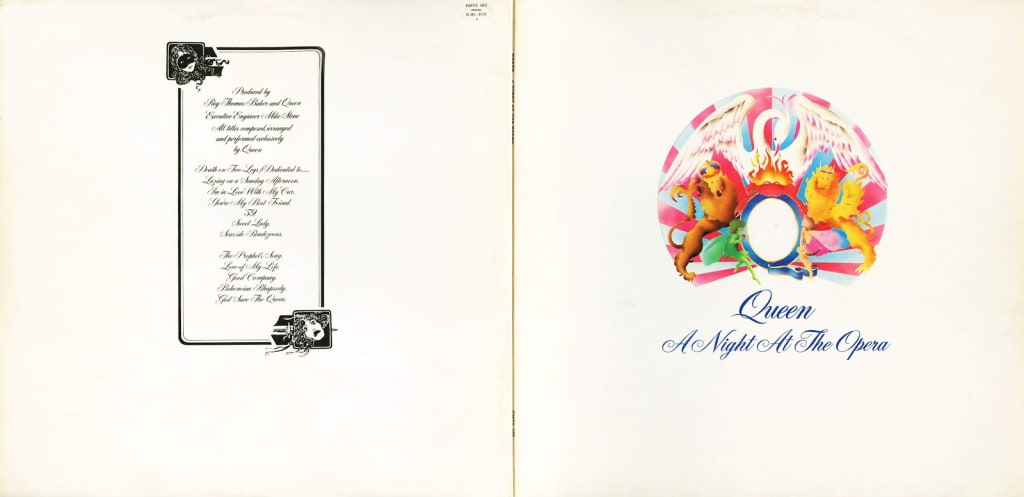
Thanks to the Rock n' Roll Rewind group for helping with this article.
Ever since music has been collected into albums, rather than released as single songs, there have been songs that stood out as hits, or even just exceptional songs, while others were just so-so "filler" songs used to have enough material to call it an album. If you're listening to music today those would be the songs you don't have in your playlist, or the ones you skip when they come up. But there are some albums where you can listen to the whole thing over and over. No skipped songs, no clunkers. Each song may or may not be a hit, but they're all good. As some have pointed out, it may be because each song is outstanding, or because the album has a flow and is meant to be listened to as a whole. Whatever the case may be, here are 25 examples.
Queen "A Night at the Opera"
In the simplest terms this is the one with "Bohemian Rhapsody," the band's top-selling song, which was featured in an iconic scene in the film "Wayne's World,", has been covered and parodied, and was the title of the recent film about the band. But beyond that legendary song, the album itself has been called Queen's best album, and was ranked by Rolling Stone as one of the greatest albums of all time.
The album is well-named, taking the title from a classic Marx Brothers film, "A Night at the Opera" and "A Day at the Races" are typically considered the Marx Brothers' two best films. This album, and the latter Queen album "A Day at the Races" featuring the song "Somebody to Love" have been called Queen's two best albums.
Aside from "Bohemian Rhapsody," the only songs you're likely to hear on the radio or see collected in a "Best of" compilation are "You're My Best Friend" and possibly the instrumental "God Save the Queen," but the album is an excellent example of each song being solid and unique. It's easy to just put the album on repeat and listen to it twice through every time and be blown away song after song.
The Beatles "Magical Mystery Tour"

The Beatles would seem to be an easy pick for this kind of list. One Beatles fan I knew was such a huge fan she considered all of the songs perfect. Each one a masterpiece. I thought and think that opinion is generous to say the least. The first couple of albums show promise, particularly with the songs written by the band, but the innovation shown in their later albums, such as this one, is incomparable.
In more vulgar terms, it's been said you can look at the Beatles output as: 1. Pre-drugs 2. When the drugs worked, and 3. When the drugs were becoming a problem. This album is most definitely from the period when the drugs were working.
The band had already done a few films, and this album was combined with a made-for-television film that turned some songs into early versions of what would become music videos. The songs included in the studio album and in the film showcase George Harrison's blossoming spiritual side and his interest in Eastern music, John Lennon's humor and imagination, and their use of different instruments and arrangements to achieve different sounds. Key tracks include: the title track, "Penny Lane," "Hello, Goodbye," "Baby You're a Rich Man," "I Am the Walrus," and the legendary "Strawberry Fields Forever."
The Beatles "Sgt. Pepper's Lonely Hearts Club Band"
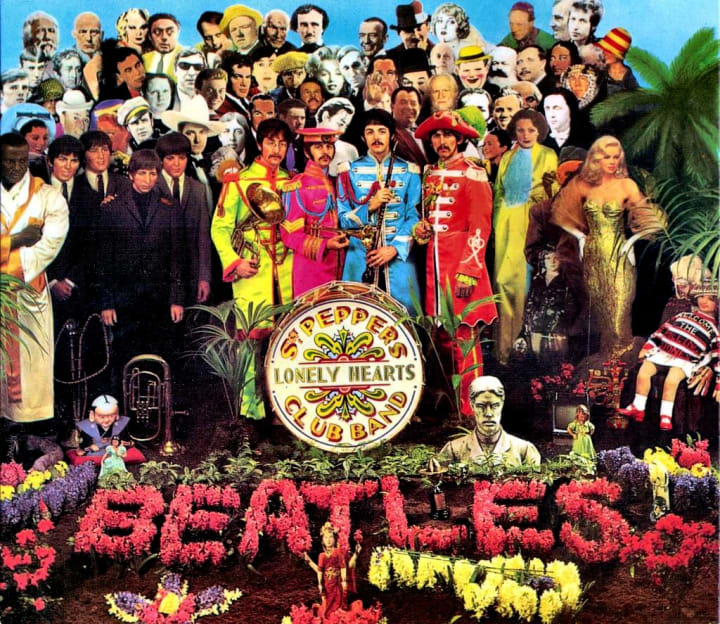
Released earlier in the same year as "Magical Mystery Tour," this album is often called the greatest album of all time, and it continues to hold the rank of the best selling album in the UK. It was recorded by the Beatles immediately after they had quit touring and decided to focus on studio work and their personal lives. Its effect in music and cultural history cannot be overestimated. With this album, records stopped being about singles (people buying and listening to one or two songs at a time) and more about buying full albums, in which anywhere from a few to all of the songs would be individually released.
This was one of the first concept albums ever recorded, in which the album is built around a theme. In this case, it was the band playing like or pretending to be another band, because they all agreed their concerts had become about them showing up and the fans screaming, not the fans listening to their music.
Songs on the album show the group hitting a new creative peak, with key tracks including the title track, combined with "With A Little Help from My Friends," the psychedelic classic "Lucy in the Sky With Diamonds" and the brilliant two-part "A Day in the Life," which concludes with the longest sustained note ever recorded.
The Beatles "Revolver"

Recorded the year before "Sgt. Pepper" and "Magical Mystery Tour," this album finds the Beatles coming close to their creative peak, in which things are working very well, but they're not quite into overdrive. John Lennon and George Harrison were both experimenting with LSD, but so far Paul McCartney was not, reflected by some of the Harrison and Lennon songs being more experimental while the McCartney songs were still well-crafted, but more standard. The band was also actively finding inspiration and competition from the Beach Boys, as each group tried to top the other with imagination, production value, and sales.
Key tracks here include: "Eleanor Rigby," one of the most-covered songs of all time, "Taxman," "Yellow Submarine," "Good Day Sunshine," "I Want to Tell You," and "Got to Get You Into My Life."
Pink Floyd "Dark Side of the Moon"
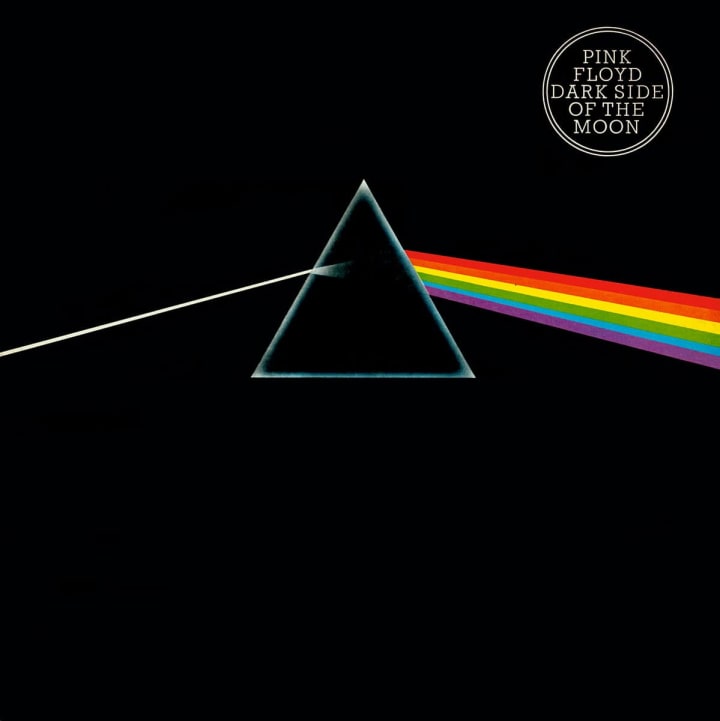
Pink Floyd essentially has three eras: 1. Syd Barrett 2. Post Syd Barrett, when Roger Waters and David Gilmour provided the primary material for the group, and 3. Post Roger Waters. While this album was the eighth recorded by the band, and was recorded 4-5 years after founder Syd Barrett left, it was the album that propelled the band to superstardom.
The album has been a perennial hot seller since its release in 1973, at one point setting the record for most consecutive weeks appearing on the US Billboard charts. It continues to appear on the charts now and then, selling at least 8,000 copies per week. It's estimated that 1 in 14 people in the US alone under age 50 owns, has owned, or has bought a copy of the album in some form.
A masterpiece of sound recording often ranked as one of the greatest albums of all time, the album features multiple layers of sound, sound bites from interviews, and sound effects, all woven together with the music to tell one big cosmic story of birth, life, madness, and death. Key tracks include "Time," "Money," and "Us and Them."
Pink Floyd "Wish You Were Here"

The first album recorded after "Dark Side of the Moon" continues Pink Floyd's tribute to founder Syd Barett who had left the band in 1968, struggling with mental health and addiction problems.
Less psychedelic than its predecessor, "Wish You Were Here" is one of the rare albums where you can hear all of the tracks on the radio on any given day, including the extra-long atmospheric song "Shine on You Crazy Diamond." Other standout songs include the title track, "Have a Cigar" and "Welcome to the Machine."
The Rolling Stones "Let it Bleed"

This album was the last to feature Rolling Stones founder and former leader Brian Jones before he was fired. Similar to Pink Floyd's Syd Barrett, Jones had been the creative force behind the band at first, but drug use made him less and less effective and other members of the band, in this case singer Mick Jagger and guitarist Keith Richards, kept the band moving forward and asserted creative control. On this album Jones only plays on two tracks, providing minimal contribution. Typically known as a two-guitar band, Richards provides most of the guitar work, though with this album the Stones brought on the talented Mick Taylor as the second guitarist after Jones was dismissed.
The album , ranked as one of the greatest albums of all time, has been described as a return to the Stones' original bluesy sound, and it includes "Love in Vain," written by blues legend Robert Johnson, as well as the Stones classic "Midnight Rambler," but it also shows their love for other music, notably country, on the song "Country Honk."
While "Midnight Rambler" and "Monkey Man" are two solid Stones favorites on the album, two other songs are unquestionable masterpieces, "You Can't Always Get What You Want," featuring acoustic and orchestral arrangements, as well as a choir, and "Gimme Shelter," featuring a duet between Mick Jagger and guest vocalist Merry Clayton. If you have ever watched a Martin Scorsese film or turned on a classic rock radio station, you have likely heard the incredible power of that song.
The Rolling Stones "Sticky Fingers"
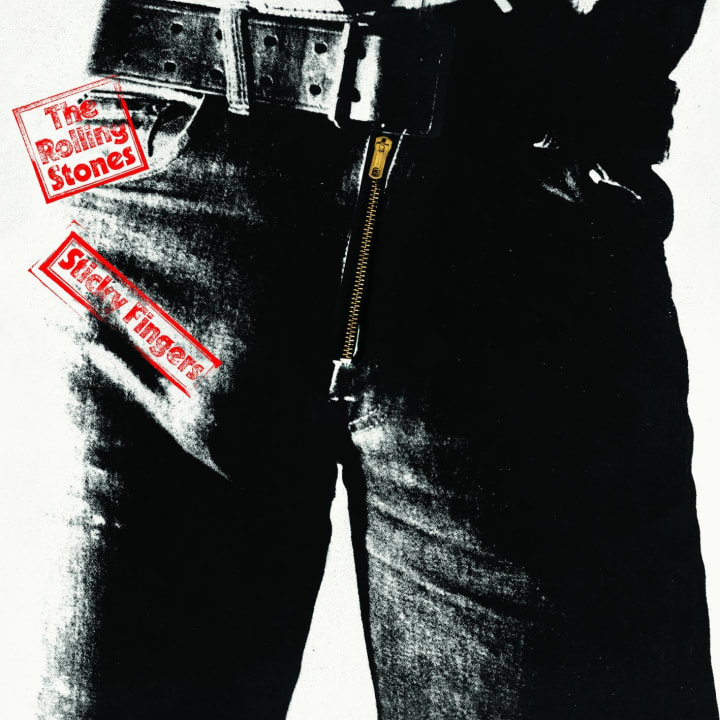
This is the first complete Stones album released without founder Brian Jones, the first on their own Rolling Stones Records label, and the first full album with new guitarist Mick Taylor. Reaching #1 in both the US and the UK, it has been called one of their best albums, possibly their best, and one of the greatest albums of all time.
With this album, the orchestration and use of various Eastern and exotic instruments indicative of the Brian Jones era is gone, and the Stones are primarily a 5-piece rock band, though at times the album includes country, or country-tinged songs, such as the classic "Wild Horses" and "Dead Flowers."
While Jones' drug use brought an end to his career and arguably his life two years earlier, it continued for other members of the band, notably Jagger and Richards, whose own heavy drug use, including heroin, began to creep into their songwriting, such as with the song "Sister Morphine." Overall, many of the tracks have grim, bleak themes, including "Brown Sugar," that despite being an upbeat crowd-pleasing song musically, discusses themes of slavery and racism.
Other standout songs on the album include "Bitch" and the incredible "Can't You Hear Me Knockin'" featuring an extended jam and sax solo by Bobby Keys.
The Rolling Stones "Exile on Main Street"
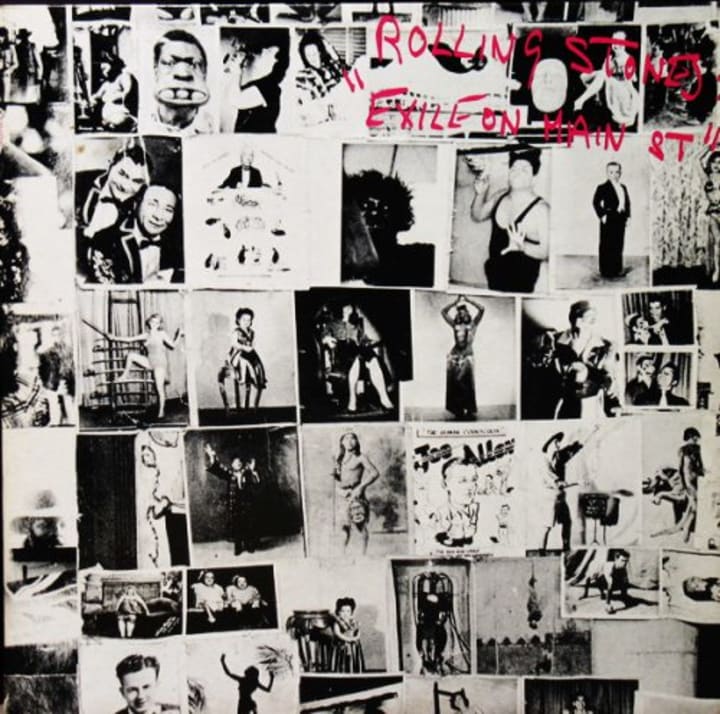
This album, the first after "Sticky Fingers" finds the Stones digging even deeper into blues and roots rock out of necessity, because they were recording not in a tech-heavy production studio in London, but in a villa they had rented in the south of France. With some songs written in advance and some songs coming out of jams or spur of the moment ideas, the album is a solid collaboration between band members, though divisions had set in, partially formed from drug use vs. drug abstinence of some band members, and partially from Jagger's boredom with blues and roots rock. Those divisions would only grown in the years to come, but at this time, the band could carry on, charting another #1 album in the US and UK as well as other countries, and scoring another one of the greatest albums of all time.
Standout tracks include the Keith Richards - sung, "Happy," as well as the country-blues themed "Tumbling Dice."
Bob Dylan "Bringing it All Back Home"

With this album, Bob Dylan abandoned his previous tendency to create simple, folksy protest songs and headed for more complex music. For half the album he also opted for a rock sound with an electric band, something many of his fans found controversial, preferring Dylan to play only acoustic folk instruments. Despite the controversy it was the first Dylan album to break into the top 10. Like many of the albums in this article, it has been included on multiple lists as one of the greatest albums of all time.
Standout tracks include the classic and hugely influential "Subterranean Homesick Blues;" "Love Minis Zero/No Limit," one of Dylan's most poetic and literary songs; "Mr. Tambourine Man," which was a later hit for the Byrds; and "It's Alright Ma, I'm Only Dying" which has been described as a masterpiece.
Bob Dylan "Blonde on Blonde"

Completing a trio of albums Dylan recorded in roughly a year, starting with "Bringing it All Back Home," this album is ranked as one of the greatest of all time, and one of Dylan's best. For these albums, while Dylan was using many musicians, his frequent collaborators were the Canadian-American band The Hawks, who would go on to become the legendary group The Band. This was Dylan's first double-album, and an enormous seller, featuring some of Dylan's strongest writing though few of the songs receive frequent commercial radio play. Standout tracks include the legendary "Rainy Day Women 12 & 35," known for the chorus "everybody must get stoned;" "Visions of Johanna," considered a masterpiece; "I Want You," "Stuck Inside of Mobile with the Memphis Blues Again," and "Just Like a Woman."
Bob Dylan "Blood on the Tracks"
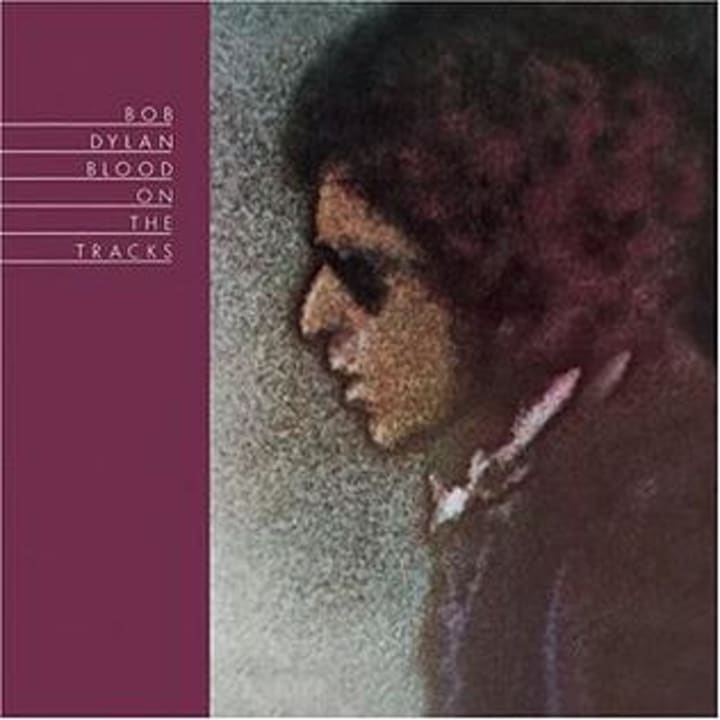
Recorded in the mid-70s, "Blood on the Tracks" shows Bob Dylan at a time of change. He had just had a successful tour with the Band, but his marriage was failing, and the two albums he recorded with Asylum Records were not received as well as his previous work. He was writing new songs, but peers and musicians he had recorded with couldn't understand what he was playing. Returning to Columbia Records, the label he had recorded his greatest albums with, he released an album of well-produced material reflecting a mature perspective and deep sensitivity. While those who know Dylan frequently believe the album is about his marriage, he himself typically denies the songs have any personal connection, though in typical Dylan style, from time to time he has indicated some of the songs do have personal connection. It is regarded by many as perhaps Dylan's best album, and considered one of the greatest albums of all time, usually in the top 10.
Standout tracks include the hit "Tangled Up in Blue" and "Shelter from the Storm."
Elvis Costello "This Year's Model"

Elvis Costello's second album, released in 1978, continued to make Costello an artist who didn't fit into any one category. He could alternately sound like pop, rock, or punk as the songs were influenced by all three, and the quality of what he recorded in turn went back to influence all three genres as well. Considered one of Costello's best albums, and one of the greatest albums of all time, the album includes perhaps his two most well-known songs, "Pump it Up" and "Radio Radio," which was the song Costello played on "Saturday Night Live" that resulted in him being banned from the show for a decade. The song, which is about censorship, was a slap back at being told by his label what to play on the show. Because he didn't clear the song with SNL producer Lorne Michaels, Costello was kept off the show until 1989.
Joni Mitchell "Blue"

Similar to Bob Dylan's "Blood on the Tracks," which was recorded four years later, Joni Mitchell's "Blue" was written and recorded at a time of great personal change, as she had ended a relationship with Graham Nash, who plays on the album, and was involved in an intense relationship with James Taylor, who also appears on the album. Nash was already a major musician, but Taylor was on the verge of becoming huge, and was struggling with a heroin problem. When Taylor's career exploded, he broke up with Mitchell and she was devastated. The songs in this album reflect the good and bad of both relationships, and show a depth of emotion and intense writing many songwriters never achieve. While the album doesn't have any of Mitchell's radio standards such as "Woodstock" or "Both Sides Now," the album charted very well in the UK, US, and Canada. More importantly, its influence has been huge. The album is ranked among the greatest albums ever recorded, usually in the top 5, and is the highest ranked album ever recorded by a woman.
Jimi Hendrix Experience "Are You Experienced?"

Jimi Hendrix never had a #1 hit record. Not a single, not an album, no #1 records, which is shocking given his influence and his recognition as one of the premier rock guitarists of all time, if not the best. His legacy properly starts with this, his first album, which reached #2. It's an amazing example of blues, rock, R&B, and psychedelic sound, far, far ahead of its time. You can hear nearly every track on the album on the radio, every day, particularly the signature song "Purple Haze," as well as "Foxey Lady," the title track, "Manic Depression," "Fire," the classic "Hey Joe," and the psychedelic epic "Third Stone from the Sun."
The Sex Pistols "Never Mind the Bollocks, Here's the Sex Pistols"

It's not often that you can point to a single song or album that launches an entire musical movement. One of them is the song "Rock Around the Clock," which most say was the first song in the genre that came to be known as Rock and Roll. Another is this album. Punk didn't start in one place. It started in New York, Los Angeles, London, and Australia over a period of time, with some variance between the sounds in the different cities. But for all intents and purposes, the London punk scene started with the Sex Pistols, whose lineup recoded precisely one studio album. This is that album, and it includes everything you need to know about early punk, from the attitude to the sound. Reacting against disco as well as the over-inflated, even orchestral sounds of glam rock and progressive rock - all of which were popular in the 70s - punk stripped rock down to its raw core while railing against societal inequality and injustice. From "Anarchy in the U.K." to "God Save the Queen," the album is all guts, no polish, just as it's meant to be.
Fleetwood Mac "Rumours"

"Rumours" was the band's 11th album, but only the second with what would become known as Fleetwood Mac's "classic line-up" of Mick Fleetwood, John McVie, Christine McVie, Stevie Nicks, and Lindsey Buckingham. The previous album, introducing the line-up, went to number 1, as did "Rumours," which is the band's highest-selling album, and one of the highest-selling albums of all time. It includes the song "Dreams," which remains the band's only song to go to #1.
Recorded at a time of great turmoil within the band, with marriages ending, affairs starting and ending, and general relationships rocky, the songs reflect the stress on the members. At the same time, bandleader Mick Fleetwood set out to record an album "without filler," in which each song could be a single. The idea was successful, in that since then, on any given day you can hear every single one of the songs from the album on traditional and satellite radio. Tracks include, "Second Hand News," "Go Your Own Way," "Gold Dust Woman," "You Make Loving Fun," "Don't Stop," and "The Chain."
Led Zeppelin "4" aka "Zoso"

Led Zeppelin's third album was not well-received. While it has tracks that continue to get heavy airplay today, commentary by critics was mixed. So when they went to record their fourth album, they decided to leave it untitled other than 4 symbols, each for one of the band members. Jimmy Page's looks like a word, "Zoso" which, along with "Led Zeppelin IV," is usually used as the album's name. It remains the band's best-selling album, and is regarded as one of the greatest albums of all time, as well as one of the top-selling albums of all time.
Recorded while the band stayed at a country house, away from pubs and free from distractions, the album includes some of Led Zeppelin's best known songs, including "Black Dog," "Rock and Roll," "Going to California," and the epic signature song, "Stairway to Heaven," regarded as one of the top ten greatest rock songs ever written, sometimes considered the best.
Neil Young "Tonight's the Night"

Released in 1975 but recorded almost entirely in 1973, this album is the third of three recorded by Young when he was in a period of deep grieving for two friends of his - one a roadie, the other a bandmate - who had died of heroin overdoses. While this album doesn't include his legendary song on that theme, "The Needle and the Damage Done," it takes the power and raw pain of that song and spreads it over an entire album, working though issues and emotions in much the same way as Dylan's "Blood on the Tracks" or Joni Mitchell's "Blue."
The album doesn't include any of Young's hits or well-known songs, but it is one of his most highly-regarded albums, frequently included on lists of the greatest albums ever recorded.
Tom Waits "Rain Dogs"

This album concludes a trilogy released in the early to mid 1980s in which Tom Waits took his sound in a new direction. While he still wrote songs that told stories exploring the dark side of humanity and the woes of irregular people working irregular jobs, now his sound could change from song to song, from bluesy to lounge to near-rock styles. One good example is the song "Singapore" which has a story like an old sailor's tale but a sound like a shanty song. There's nothing quite like it. The album has made some lists of greatest albums ever recorded, as long as the list of albums to hear before you die.
In the recording of the album, Waits insisted on avoiding production shortcuts like sampling instrumental tracks from other records or tweaking the sound in mixing to achieve exactly what he wanted. Instead, he insisted on experimenting with unconventional ways of producing the sounds he wanted, such as beating on a door instead of a drum, if it meant making a natural sound. Standout tracks on the album include "Anywhere I Lay My Head," "Clap Hands," and the hit, "Downtown Train."
The Who "Who's Next"

There are a lot of ways to describe The Who's fifth album, but the best way may be "iconic." From the cover, which satirizes the monolith from the film "2001: A Space Odyssey" (a recent film at the time) to nearly every single song on the album, "Who's Next" stands out as a high point in the history of rock. Ironically, most of the album is crafted from the remains of what had been a failed project by primary songwriter/guitarist Pete Townshend.
Townshend had been the driving force behind the band's album "Tommy," which is one of, if not the first albums to be described as a "rock opera." That album and a subsequent appearance at Woodstock catapulted the band to international fame and financial stability. Townshend had planned the follow-up to that album to be another rock opera, "Lifehouse," which had a science-fiction plot revolving around a futuristic society in which humanity connects mainly via electronic communication, an idea that predated and essentially predicted the Internet.
Townshend and the Who played material for the new album in front of test audiences in New York and elsewhere, encouraging their participation, in the spirit of the concept of the album. This concept failed, as audiences just wanted them to perform "Tommy," and the revolutionary use of electronic sounds and keyboards involved with the new songs were too different from the band's earlier sounds.
The idea of releasing the songs as another rock opera and subsequent film was trashed, and the best songs from the new batch were salvaged and made into a new album, which ironically includes some of the band's most powerful and well-known songs, including "Baba O'Riley" (known by many as "Teenage Wasteland"); "Behind Blue Eyes;" "My Wife," one of bassist John Entwistle's two signature songs; and the perennial show closer "Won't Get Fooled Again."
David Bowie "The Rise and Fall of Ziggy Stardust and the Spiders from Mars"
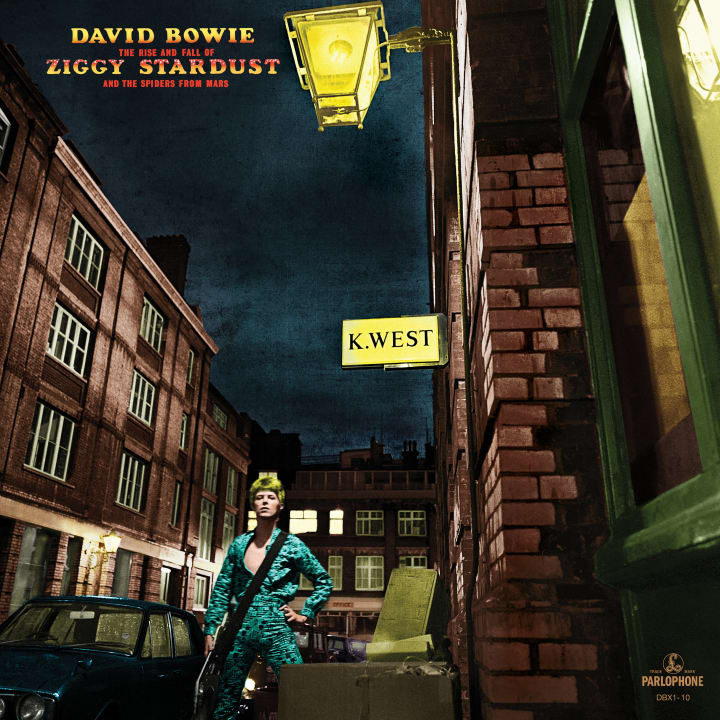
Sometimes it takes a bit for an artist to make a breakthrough. In this case, David Bowie's fifth album, released in 1972, which was followed by an appearance on the BBC's "Top of the Pops", singing "Starman" made him a star. The album is considered one of Bowie's best and is often considered one of the greatest albums of all time.
The album itself is a loose rock opera/theme album in which Bowie adopts the alter ego of Ziggy Stardust, an androgynous and bisexual rock star. His band are the Spiders from Mars. In the subsequent tour to support the album, which resulted in a live album and film, Bowie had problems separating his real identity from the Ziggy character. Fans also at times had trouble separating Bowie from the creation, thinking him some sort of alien musician from space.
The legacy of the album goes beyond Bowie. While Bowie himself was influenced by rocker Iggy Pop and the bands The Velvet Underground and T.Rex in creating the album, the Ziggy Stardust character and this album were key in creating what would be called the Glam Rock genre.
Key tracks on the album include, "Moonage Daydream," "Five Years," "Starman," "Ziggy Stardust," and "Suffragette City."
Lou Reed "New York"

Lou Reed's 15th studio album, released in 1989, doesn't include any of the songs you're likely to hear on the radio every day, like "Walk on the Wild Side" or "Perfect Day." Those all came out in the 70s, and by this point Reed's career was in a slump, but interest in his old group the Velvet Underground was at a fever pitch.
Recorded as a themed album, where all of the songs were about his home town of New York, the album was just pure, simple, rock n roll, at a time when rock songs were unusual compared to pop and other genres like metal. The record resulted in one number one song, "Dirty Blvd." and a Velvet Underground reunion tour.
The record in its own right is just a solid, solid, record. You can listen to it and just keep listening to it, one song flowing into the next, forming a narrative tapestry. It's not a bunch of hits, but it's a great album.
Tom Petty "Full Moon Fever"
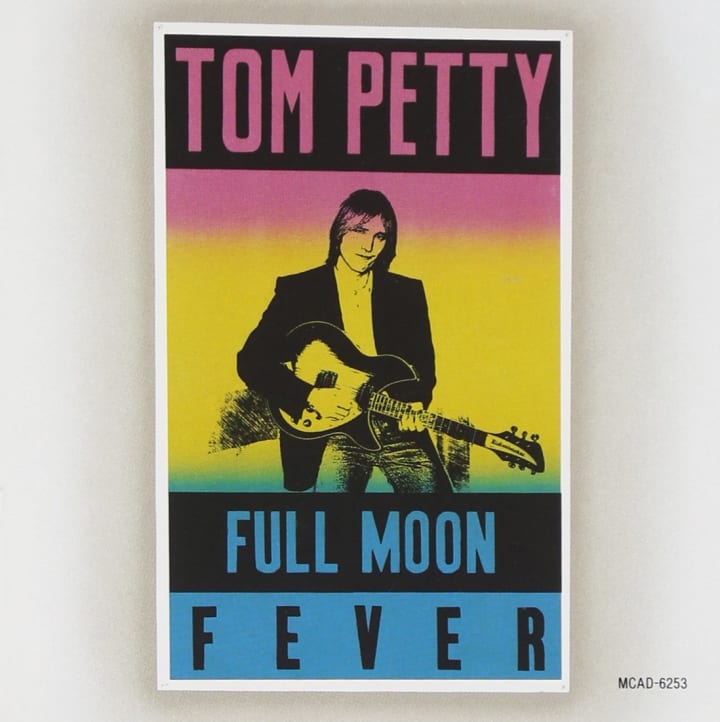
This is the first album Petty recorded without the Heartbreakers, though most of them appear on it. The album was produced by fellow Travelling Wiburys member Jeff Lynne, and in fact Lynne's production of this and other albums of the members, including Roy Orbison and George Harrison, led to the formation of the band, and almost all of the Wilburys also appear on the album.
Petty has said he enjoyed the making of this album more than any other album in his career, and the album's smooth sound reflect the relaxed atmosphere of the recording. It is included on lists of the Greatest albums of all time, and is considered a culmination of his work with both the Heartbreakers and the Wilburys, as well as a tribute to his influences.
Key tracks include: "Runnin' Down a Dream," "Free Fallin'," "I Won't Back Down," and "Yer So Bad."
Bruce Springsteen and the E Street Band "Born to Run"

As with some of the other albums on the list, such as "Who's Next" and "Sgt. Pepper's Lonely Hearts Club Band," this album is iconic. Just the mention of the name brings up the album cover and the sound of the title track. And, as in the case of "Ziggy Stardust" and David Bowie, this wasn't Springsteen's first album, but it is the one that made him a star. Springsteen had to have a hit or he would lose his record contract. What he recorded is one of the greatest albums of all time.
While only "Born to Run" and "Tenth Avenue Freeze Out" were released as singles, every song stands well on its own, and the entire album immediately gained airplay on "album rock" stations in the 70s.
Key tracks include the title track, "Thunder Road," "She's the One," and the epic masterpiece, "Jungleland."
About the Creator
Gene Lass
Gene Lass is a professional writer, writing and editing numerous books of non-fiction, poetry, and fiction. Several have been Top 100 Amazon Best Sellers. His short story, “Fence Sitter” was nominated for Best of the Net 2020.
Reader insights
Outstanding
Excellent work. Looking forward to reading more!
Top insights
Compelling and original writing
Creative use of language & vocab
Easy to read and follow
Well-structured & engaging content
Excellent storytelling
Original narrative & well developed characters
Expert insights and opinions
Arguments were carefully researched and presented
Eye opening
Niche topic & fresh perspectives
Heartfelt and relatable
The story invoked strong personal emotions
On-point and relevant
Writing reflected the title & theme


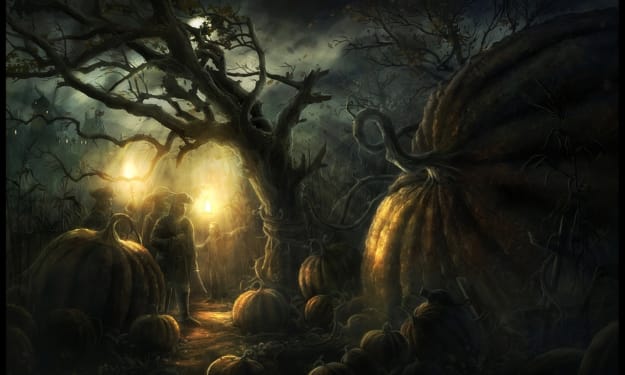



Comments (2)
Some great picks in there. I remember first hearing Hendrix in high school; mind blowing stuff. Same with Lou and The Velvet Underground. Neat to hear some background on the classics!
This was a great compilation. You did a fantastic job!